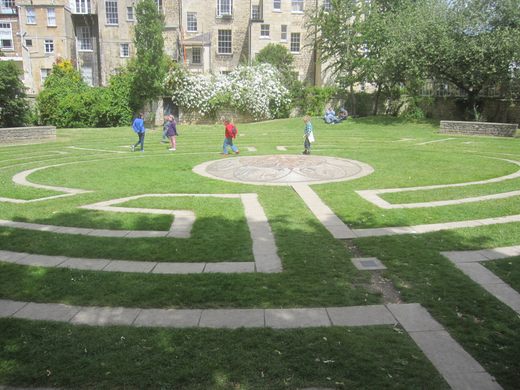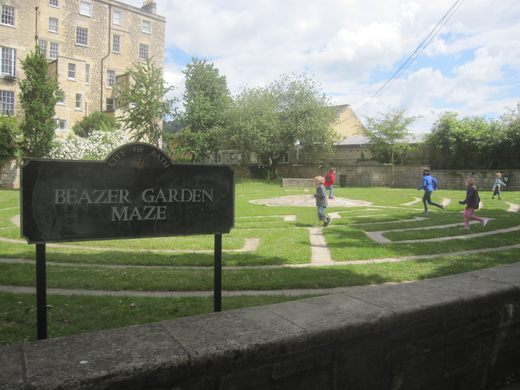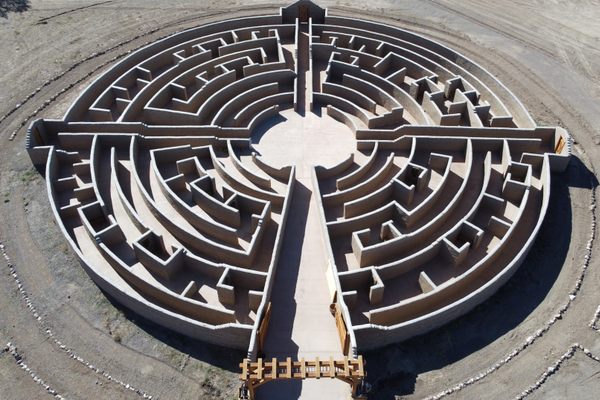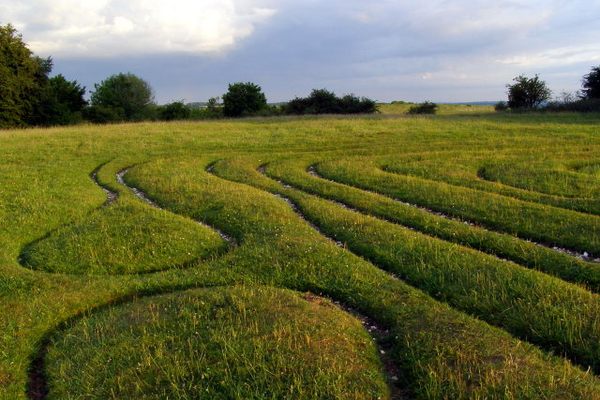Beazer Garden Maze
Created by one of England's most prolific labyrinth designers, inspired by Bath city history.
Alongside the river in Bath near Pulteney Bridge, a small garden labyrinth made of paving stones weaves around a mosiac center.
Although called a maze the design is technically a labyrinth. Unlike a maze, which has a multicursal or branching pattern, a labyrinth has only a unicursal path, a single line woven back and forth in a complex pattern but never branching. Despite the story of Minotaur - in which the labyrinth described would be correctly called a maze - true labyrinths are impossible to get lost in, go in either direction and you eventually reach the place where you began.
The notion and pattern of the labyrinth, shows up throughout world cultures, and often has religious meaning as a path to god, ancestors, or enlightenment. In early Christian cultures, believers are thought to have walked the labyrinths endlessly obtaining an altered mind state as they did so.
The Beazer Garden Maze, however, generally does not have monks tripping on spirituality wandering around on it, but rather local children while their parents sit and enjoy the park.
Named for the local construction company who donated the land on which the paver stone labyrinth was built, the labyrinth was designed by deceased diplomat (and perhaps spy), maze designer and “labyrinthologist” Randoll Coate in 1984. Coate designed over 50 mazes in England which are known for their hidden symbolism. Coate, who was also a friend of labyrinth enthusiast Jorge Luis Borges, said labyrinths gave “our world of harsh reality and mindless speed a timeless oasis, a leisurely paradise, the substance of a dream.”
The petite labyrinth in Bath is inspired by the city’s Georgian architecture, Isambard Kingdom Brunel’s railway designs and is centered around a large Roman-inspired mosaic.
Community Contributors
Added by
The Atlas Obscura Podcast is Back!






































Follow us on Twitter to get the latest on the world's hidden wonders.
Like us on Facebook to get the latest on the world's hidden wonders.
Follow us on Twitter Like us on Facebook